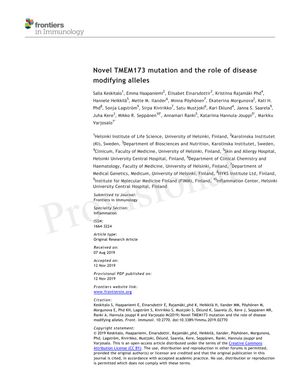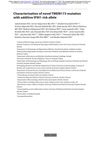Novel TMEM173 Mutation and the Role of Disease-Modifying Alleles
December 2019
in “
Frontiers in immunology
”
alopecia photosensitivity thyroid dysfunction STING protein TMEM173 IFIH1 G207E mutation inflammatory pathways interferon signature inflammasome activation peripheral blood mononuclear cells JAK1/2 inhibitor baricitinib hair regrowth vasculitic ulcer hair loss immune response inflammation PBMCs Jakafi

TLDR A new mutation in the STING protein causes a range of symptoms and its severity may be affected by other genetic variations; treatment with a specific inhibitor showed improvement in one patient.
The document reports a novel gain-of-function mutation G207E in the STING protein, which is involved in the immune response to cytosolic nucleic acids. This mutation was found to cause a unique set of symptoms including alopecia, photosensitivity, thyroid dysfunction, and features of STING-associated vasculopathy with onset in infancy (SAVI). The study suggests that the severity of the disease phenotype may be influenced by polymorphisms in the TMEM173 and IFIH1 genes, which showed variable penetrance in the affected family. The G207E mutation was shown to activate inflammatory pathways and cause an aberrant interferon signature and inflammasome activation in patient-derived peripheral blood mononuclear cells (PBMCs). Treatment with the JAK1/2 inhibitor baricitinib improved symptoms in one patient, including promoting hair regrowth and healing a vasculitic ulcer. The study also suggests that the G207E mutation may affect the cellular trafficking of the STING protein.



